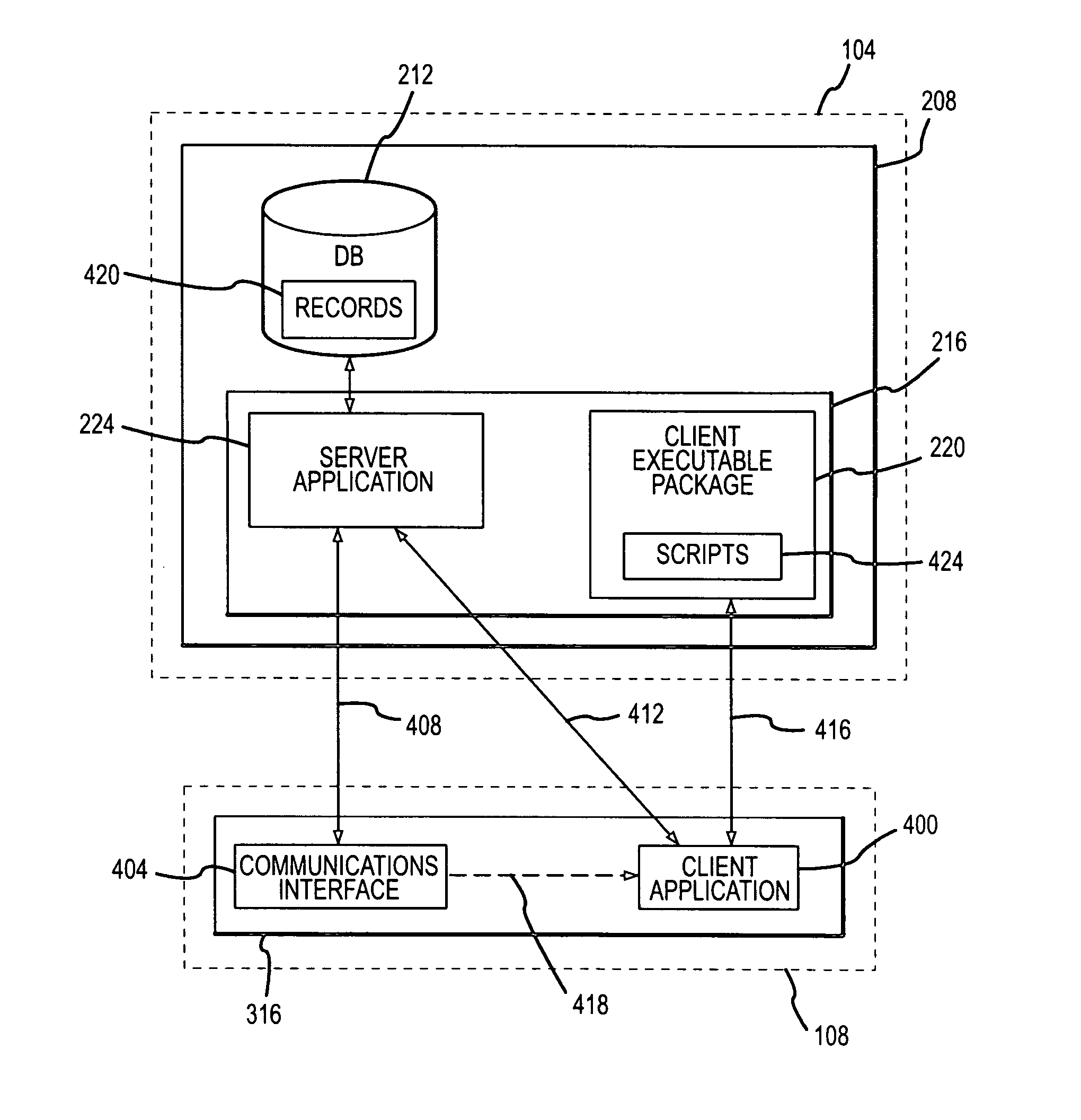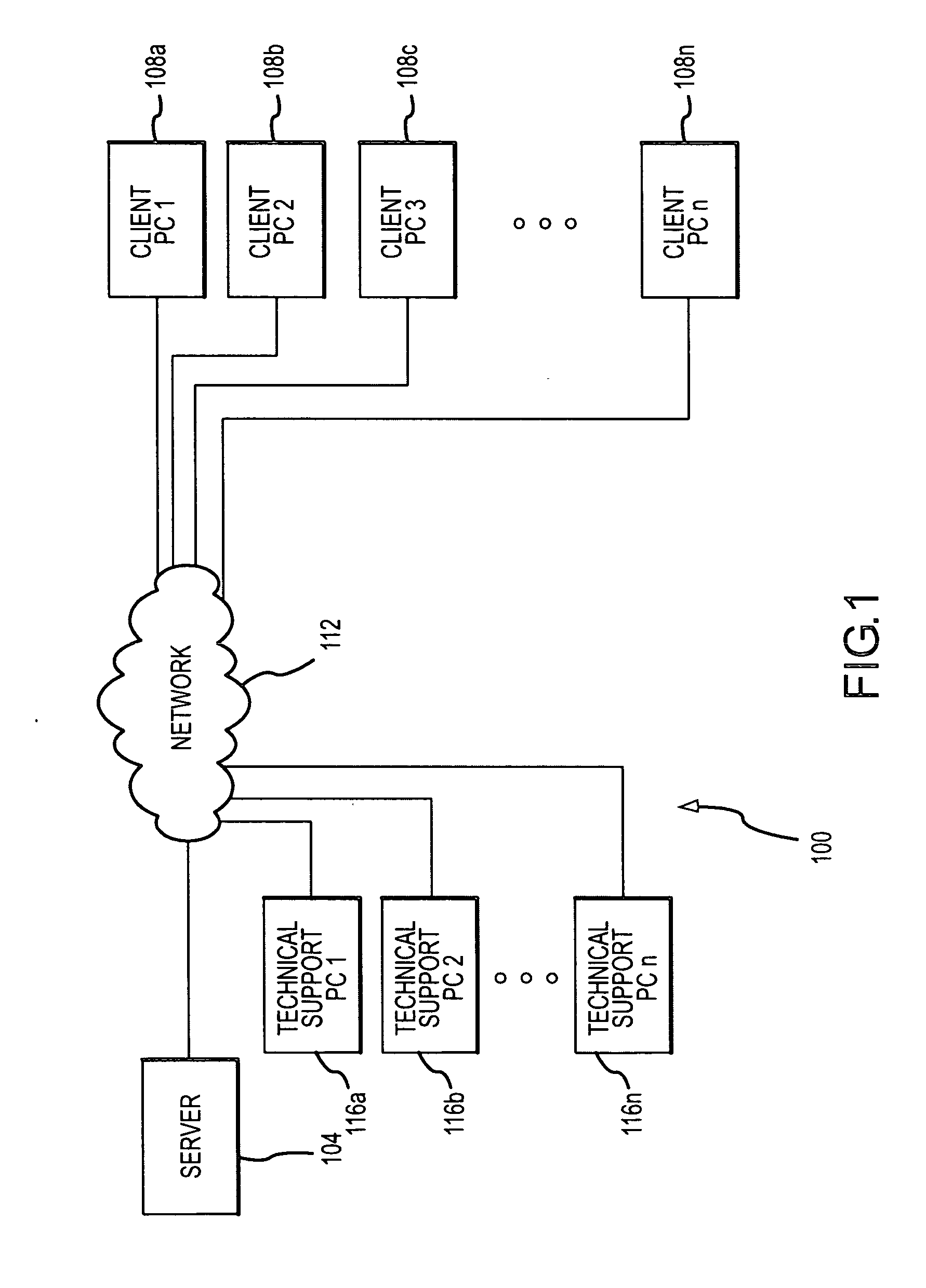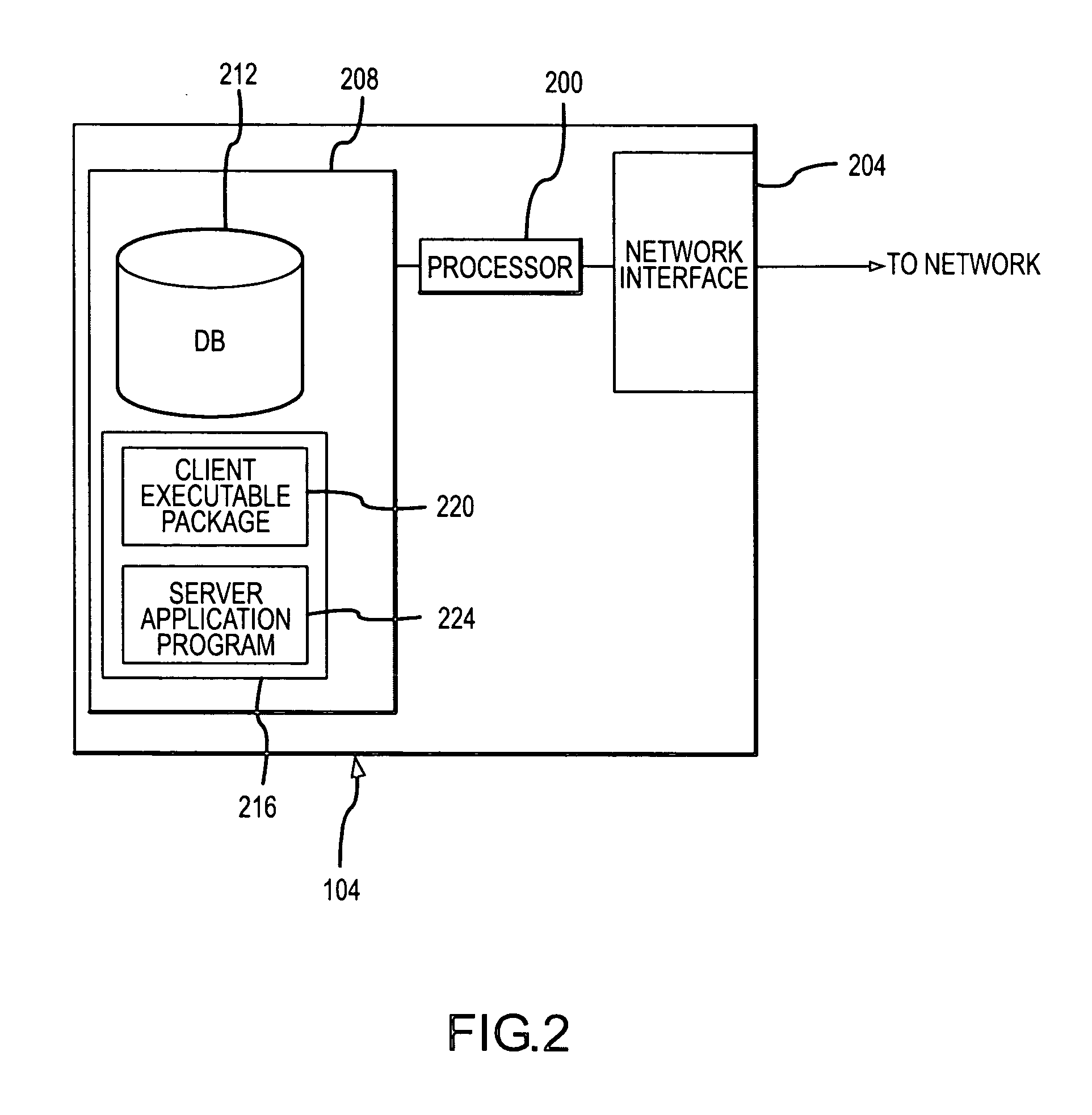Intelligent knowledge management and content delivery system
a content delivery system and intelligent technology, applied in the field of intelligent content delivery system, can solve the problems of inability to provide content or knowledge such as technical support, high cost and time consumption, and inability to meet the needs of end users,
- Summary
- Abstract
- Description
- Claims
- Application Information
AI Technical Summary
Benefits of technology
Problems solved by technology
Method used
Image
Examples
Embodiment Construction
[0029]FIG. 1 illustrates a system 100 in accordance with embodiments of the present invention. The system 100 generally includes a server 104 interconnected to one or more client computers 108a to 108n by a network 112. In general, the network 112 may be any computer network or means of establishing communications between two computers, including the Internet and wireless methods. In addition, the network 112 may comprise a number of interconnected networks. Although FIG. 1 shows a server 104 interconnected to a number of client computers 108, it should be appreciated that the system 100 does not require more than one client computer 108. As used herein, the term client computer 108, in addition to a general or personal type computer, may also refer to a variety of digital devices capable of communicating with another digital device, including personal digital assistants (PDA's) or other hand held devices. In accordance with still other embodiments of the present invention, a client...
PUM
 Login to View More
Login to View More Abstract
Description
Claims
Application Information
 Login to View More
Login to View More - R&D
- Intellectual Property
- Life Sciences
- Materials
- Tech Scout
- Unparalleled Data Quality
- Higher Quality Content
- 60% Fewer Hallucinations
Browse by: Latest US Patents, China's latest patents, Technical Efficacy Thesaurus, Application Domain, Technology Topic, Popular Technical Reports.
© 2025 PatSnap. All rights reserved.Legal|Privacy policy|Modern Slavery Act Transparency Statement|Sitemap|About US| Contact US: help@patsnap.com



